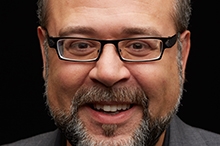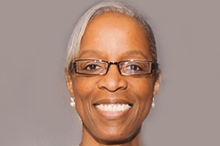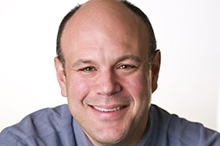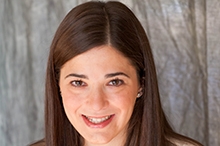Champions of Change Blog
Nominate a White House Champion of Change for Young Women Empowering Communities
Posted by on July 16, 2015 at 1:26 PM EDTAmerica needs the full talent of all our people. Maintaining our nation’s competitive advantage means we can’t afford to leave anyone out or behind. Our success as a country depends on ensuring that all young people have a chance to reach their full potential.
President Obama created the White House Council on Women and Girls in the first months of his Presidency to ensure that every agency, department and office in the Federal Government takes into account the needs and aspirations of women and girls in every aspect of their work. We have made much progress as a country, but there is still much work to do to close opportunity gaps and barriers to success. Many of these challenges disproportionately affect women and girls.
In November, 2014, the Council on Women and Girls released a report, “Women and Girls of Color: Addressing Challenges and Expanding Opportunity.” The Council is working to ensure that government policies appropriately consider these challenges and persistent opportunity gaps faced by too many girls and women from under-represented communities to ensure that everyone who aspires to get ahead has a chance to succeed. The President also recognizes that innovation comes from communities and is often sponsored by young people who notice problems and work with their schools, youth organizations, and even in start-ups to craft new solutions and fresh perspectives.
In September, the White House will recognize young women who are already leading and inspiring their communities as advocates, peer-mentors, artists, innovators, and entrepreneurs as Champions of Change.
Learn more about WomenData liberación: the Path to Precision Medicine
Posted by on July 9, 2015 at 7:10 PM EDT
On January 30, 2015, I watched with excitement the live video stream in which President Barack Obama announced a $215 million investment to expand our country’s Precision Medicine Initiative. The National Institutes of Health (NIH) defines precision medicine as an “approach for disease treatment and prevention that takes into account individual variability in genes, environment, and lifestyle for each person.”
As a person living with familial hypertrophic cardiomyopathy (HCM), a genetic cardiovascular disease that puts me at risk for sudden cardiac death, the president’s announcement was welcome news. HCM affects an estimated one in 500 people and is the most common genetic heart condition in the United States. It is also the leading cause of sudden cardiac death in people under the age of 35.
New precision medicine approaches to treat HCM are already underway. These unprecedented treatments hold the promise of stopping—and potentially even reversing—the course of the disease. This gives me great hope for the future.
But if we hope to usher in a new era of personalized medicine, we must first liberate our health data. This has been the focus of my advocacy.
Ever since receiving an implantable cardioverter-defibrillator (ICD), a small electronic device designed to deliver a shock to the heart in the event of a deadly arrhythmia, I have sought to liberate the data collected by my implant. As helpful as it is to a physician, the data collected by the ICD is mostly useful to the patient living with the condition, if he hopes to engage in his care and take responsibility for his health.
However, under the current care model, data from implanted cardiac devices (such as pacemakers and ICDs) is inaccessible to patients.
The Health Insurance Portability and Accountability Act (HIPAA) gives patients the right to access their medical records. But while patients can obtain copies of the reports generated from the ICD, the electronic data remains siloed away and out of their reach. This forces patients to take a passive role in their care and discourages engagement. We must reconsider this and other outdated practices that are obstacles to precision medicine.
During President Obama’s announcement, he also stated that in order for precision medicine to realize its full potential, we must create tools that give patients the ability to get involved. “We want every American, ultimately, to be able to securely access and analyze their own health data so that they can make the best decisions for themselves and for their families,” said President Obama. It was music to my ears.
I took the President’s words as a call to free our health data so we can use it to improve our health and that of our fellow Americans—“data liberacíon” as Todd Park, former Chief Technology Officer of the United States, would say.
As patients, we must secure access to our health data, have the opportunity to learn from it, and the freedom to share it with whomever we wish, including donating it to research for the public good. Freeing the data will also enable patient activation and promote individual responsibility, and it will clear our path to precision medicine. As Americans, we deserve this.
Hugo Campos is a data liberation advocate and leader in the e-patient movement.
Learn more about TechnologyA World beyond Mobile!
Posted by on July 9, 2015 at 7:01 PM EDT
Breaking News: The world is now mobile…and it the mobile revolution is here to stay, but if “going mobile” is a thing of the past, one must wonder, what is next? What is the next wave in technology evaluation?
Observing recent movements in the technology market give us a clue to answer that question. Whether its Google buying smart thermostat maker Nest for 3 billion dollars or Apple recently launching the Apple Watch, one thing is clear: connectivity is leaping beyond the “smart phone” and infusing itself into our daily lives. Everything we touch could be connected. In addition to convenience, this new world of universal connectivity is producing something else in mass quantity: data. And, with data comes the need for its meaningful interpretation through algorithms, or data science. The use of data science in this newfound world of connectivity is delivering what used to be considered the realm of science fiction, like autonomous drones, self-driving cars and 3-D printers. To put it simply, it looks like the next leap in technology will take place at the intersection between data and how users experience technology. That is, the next revolution will change how we engage and interact with data in our daily lives through the medium of technology.
Every industry (from retail to defense) stands to gain from this evolution. However, I believe that healthcare is uniquely positioned to reap some of its most significant benefits. In fact, I truly believe that, over the next 50 years, healthcare will be fundamentally reshaped as a more personalized and precise care delivery model. And, this reshaping of healthcare will be driven by the gains in data science.
My own journey at this intersection began with a youthful zeal for technology. But, it kicked into high gear with my involvement with the Quantified-Self movement - a niche community based the premise of “self-knowledge through data”. While we are all self-proclaimed data geeks, we were driven by the intrinsic belief that the solutions to our most dire and critical healthcare needs would be unlocked by the power of data lurking beneath the surface. Through my involvement with this group, I quickly realized that data science would be the face of precision medicine and it would be the wave of the future. But I was left wondering: how could I put hope into action? And how could I spread the word from a group of geeks interested in this future to everyone that had a stake in their healthcare?
The answer to that question has been revealed through my journey in the world of entrepreneurship. I have built Babyscripts, a company whose sole focus of improving pregnancies using data. We created a product that enabled obstetricians to remotely monitor pregnancies through simple tools like connected weight scales and blood pressure cuffs. We showed that using such a tool could not only enhance the care that providers deliver, but also improve access while lowering costs. More importantly, we are showing that we are now beginning to tap into the power of data to improve outcomes. What is even more exciting is that we are not the only ones tapping into that power. Welldoc, a company in Baltimore, is also fundamentally changing diabetes management with data. Another company, Adhere tech is changing the way medication adherence is being handled with connectivity, while AliveCor is doing the executing similar changes in ECG monitoring. It is truly amazing to see how innovators across the nation are moving the needle towards precision medicine by using data and integrating it into our daily lives.
So what makes our company and the products of these innovators unique and effective? As I see it, there are two salient elements. First, we are designing the experience of technology, and its management of our health, to be more intuitive, more ambient and ultimately more seamlessly integrated into the human experience – a term that we at Babyscripts have dubbed “Human Experience,” or “HumEx,” for short. Second, we are uncovering patterns in the data and, through those patterns, dynamically reacting to medical issues in real time. We call this Data Science as a Service, or DSaaS, for short – a term that we have borrowed from our good friend Anand Iyer at Welldoc. But, most importantly, we do not treat HumEx and DSaaS as discreet, independent elements that might lead to a successful product; to the contrary, DSaaS and HumEx form an integrated, coordinated and unified whole. As data is gathered (or better, generated) from the human experience, interpretation of data seamlessly and automatically informs the human experience. This infinite back and forth between data and human activity ultimately forms the basis for the intelligent and genuine improvement of the human experience – in our case, the medical experience. Thus, the union of HumEx and DSaaS together constitute the future of healthcare: Precision Medicine, which is, treating each patient as unique and holistic to truly solve their problems.
Anish Sebastian is the founder of Babyscripts.
Learn more about TechnologyGrassroots Services to the Underserved Communities
Posted by on July 9, 2015 at 6:57 PM EDT
I am inspired and encouraged by the many great leaders in this country and to be selected to be a White House Champion of Change, I am honored. Breast Cancer is an issue that has plaque United States for years and I am glad that research is on-going.
I became a breast cancer survivor and advocate in 1998, and began speaking at schools, churches and community events in an effort to educate women about the significance of early detection through yearly mammograms and breast self-exams. I believe it is important to educate women of all ages so they are well-equipped with information.
Many proposals for research studies and clinical trials are approved and conducted each year to find a cure or improve treatment for breast cancer. There are also many educational programs that are present to the community. All of the effort is extremely beneficial because there are over 2.8 million women living after treatment with breast cancer.
Recent statistic’s indicated that the breast cancer death rates are in decline. Statistics are somewhat confusing, because it is good news that death rates are in decline, however, the decline has been faster for women who have easy access to screening. Women from poor areas now have the highest death rate from breast cancer. Why? Because they have less access to screening and treatment. Some other statistic from cancer.org are, “African American women are underrepresented in clinical trials and thus the influence of race on treatment and survival is unknown”; “African American women have a 41 percent higher death rate then Caucasian women despite a lower incidence rate”. And as the CDC.gov states, “the five-year breast cancer survival rate for African American women is 69 percent, whereas it is 84 percent for Caucasian women”
This is why Sisters Network of Central New Jersey (SNCNJ), the organization I co-founded, is so important. SNCNJ is unique because we are a chapter of the first and only African American survivor run breast cancer survivorship organization. All of SNCNJ project advertising and programs are geared toward African American’s using specific colors, language, ethnicity themes and outreach workers and volunteers. To increase mammogram screening we use a “Shop Rite” card as an incentive once the woman completes her mammogram. “Out of the box” thinking has to be something of value of ours. To increase yearly clinical examinations, SNCNJ host a free Annual Health Screening for the community in partnership with local medical professionals equip with cutting-edge Breast Health information; also included are total cholesterol & HDL’s, Blood Sugar and Pressure and Lifestyle Education because these are also problematic in the community. SNCNJ heard firsthand the need that is in the community and developed the Breast Cancer Assistant Program which provides financial assistance to underserved and qualified women. In 2009, SNCNJ partnered with The New Jersey Commission on Cancer Research to publish “The Courage to Trust a Clinical Trial”, specifically for African American women.
There is a cancer burden in the United States and I believe it starts with the underserved and African American women. African American women must participate in more clinical trials and I believe that educational programs that address their culture would help build trust in clinical trials. Proposals for research should begin prior to diagnoses; once a woman is diagnosed she inherits the 41 percent death rate and 69 percent survival rate. I will continue to advocate and give women hope – with hope all things are possible.
Dorothy Reed is the co-founder/president of Sisters Network of Central New Jersey, committed to increasing attention to breast cancer in the African American community.
Learn more about TechnologyDiabetes Innovation Can Come from Anywhere
Posted by on July 9, 2015 at 6:54 PM EDT
Tidepool is honored to be a part of the Champions of Change for Precision Medicine initiative. Tidepool is part of the larger #WeAreNotWaiting movement, a Twitter hashtag symbolizing the powerful notion that patients should own their own health and therapy data and that innovation can emanate from anywhere. Engaged patients armed with data can be active participants in their own care, leading to innovative solutions and healthier outcomes on a timescale much faster than traditional medical device development.
My personal story began when my daughter Katie was diagnosed with Type 1 Diabetes (T1D) in 2011. Prior to that, I knew nothing about diabetes. I didn’t know that there were different kinds of diabetes or what the day-to-day treatment meant. Type 1 Diabetes is an autoimmune disease that causes the pancreas to stop producing insulin, a hormone necessary to metabolize food and absorb energy. I certainly didn’t know how burdensome T1D is to manage nor how high the stakes are for getting it right. People with T1D face both the daily risk of a seizure, coma or death from low blood sugars (hypoglycemia) caused by taking too much insulin, and also long-term risks of nerve damage and organ failure due to high blood sugars (hyperglycemia). To make managing T1D even more challenging, exercise, sickness, stress, menstrual cycles and many other factors also affect how your body will react to insulin.
With the stakes so high you might think that there would be a vibrant ecosystem of applications to help people manage T1D. Unfortunately, until very recently, most diabetes devices like insulin pumps, continuous glucose monitors and blood glucose meters came with their own hard-to-use proprietary software. Fortunately, as Tidepool and the #WeAreNotWaiting movement have gained momentum, this has changed. Most diabetes device companies now embrace the notion that patients own their own data and that patients should be able to use whatever software they want to access it.
At first, the prospect of delivering regulated medical software seemed daunting to us. Fortunately, we received great advice to engage early and often with the FDA, which we’ve done. By being transparent about our activities and involving the FDA as our software has evolved, we’ve found the team at CDRH to be completely pragmatic, encouraging and supportive. Like our software, we’ve chosen to make our regulatory quality system freely available, which we hope will help other healthcare startups.
Tidepool chooses to be a non-profit because it is the best way to make it clear to patients and industry that our efforts are not about building a business or monetizing patient data. Instead, our goal is to give away our software – we are a free and open source software project – and to enable an ecosystem of application development and diabetes research.
Tidepool is one of many projects that have embraced the notion that empowered patients and parents with access to diabetes data and device protocols can make a profound difference. The NightScout project and “CGM in the Cloud” community have enabled remote monitoring of loved ones’ blood sugars. OpenAPS, Bigfoot Biomedical and others have done work that enables automated delivery of insulin. Like Tidepool, these projects all began as do-it-yourself projects by engaged parents and patients, all making it clear that the T1D community will not stand idly by waiting for innovation to occur. Innovation in healthcare is as likely to come from a garage or home office as it is from the labs of a large device company.
Howard Look is the Founder and CEO of Tidepool, a non-profit, open source effort dedicated to reducing the burden of managing Type 1 Diabetes. His teenage daughter has T1D.
Learn more about TechnologyEmily's Entourage: Giving Hope to Orphans of Orphan Disease
Posted by on July 9, 2015 at 6:49 PM EDT
As a 30 year old with big eyes, a bright trajectory, and a fatal and progressing rare disease, precision medicine is not just a bold political initiative or exciting new era of biomedical research and personalized therapeutics – it’s my hope for a future.
My disease is cystic fibrosis (CF) and the good news is that in the past few years, there have been major breakthroughs for specific CF mutations. In 2012, the FDA approved the game-changing drug Ivacaftor for the treatment of a particular CF mutation affecting 4 percent of the CF population. As the first drug to treat the root cause of the disease rather than the symptoms, it was a landmark moment for the CF community and precision medicine at large, revealing its promise to transform unstoppable, life-shortening diseases.
Unfortunately, I belong to the “unlucky” minority that doesn’t benefit from this advance nor the latest combination therapy for the most common CF mutation, which is currently with the FDA for approval. My two copies of a rare nonsense mutation place me in territory so uncharted that there are no published statistics to indicate the size of my micro-community. I am a rarity among the rare, an orphan of an orphan disease, and an orphan with advanced and rapidly progressing disease. With only 35% of the average lung function at my healthiest, I do not have time to wait for research to unfold on its normal timeline.
But rather than become demoralized, my family, friends and I decided to take action. Precision medicine paradoxically spurred our realization of the essentialness of community—collective, imprecise and mighty in its power.
Those forces fueled the formation of Emily’s Entourage (EE), a 501(c)3 patient-and-community-powered research network that aims to fast-track research, drug discovery, and a cure for rare nonsense CF mutations.
Our belief in the power of community is at the heart of everything we do. Our community is local and virtual, and it includes academia, biotech, pharma, venture capital and other CF orphans from around the world. We see our most important role as connectors, facilitating the gateway between people, resources, science, and drug development. We want to remove barriers, catalyze collaborations, spur progress—and do it fast.
So far, we’ve made great strides. Since its inception on my parents’ living room floor in December 2011, EE has raised over $1.5 million through community events, social media campaigns, college campuses, and an annual gala and appeal.
Those funds support research grants to top-notch academic institutions and propel our efforts to forge unprecedented collaboration between leading scientists and industry, and facilitate the exchange of ideas across fields and institutions. In fact, earlier this year, we hosted a first-of-its-kind scientific symposium focused on rare nonsense CF mutations in partnership with the Penn Orphan Disease Center. I have personally donated millions of nasal epithelial and iPs cells for this research.
My experience with EE has taught me that communities are unstoppable. I believe that the only way to achieve expeditious progress for rare, orphan diseases is by opening gates, potentiating the exchange of information and resources, and building synergistic, collaborative and strong communities. After all, every orphan deserves a deep breath, loving care, and a foster (and eventual forever) home.
Emily Kramer-Golinkoff, MBE, is Co-Founder of Emily’s Entourage and Manager of Strategic Initiatives and Operations at the Penn Medicine Social Media and Health Innovation Lab.
Learn more about Technology
- &lsaquo previous
- 1
- 2
- 3
- 4
- 5
- 6
- 7
- 8
- 9
- …
- next &rsaquo
White House Blogs
- The White House Blog
- Middle Class Task Force
- Council of Economic Advisers
- Council on Environmental Quality
- Council on Women and Girls
- Office of Intergovernmental Affairs
- Office of Management and Budget
- Office of Public Engagement
- Office of Science & Tech Policy
- Office of Urban Affairs
- Open Government
- Faith and Neighborhood Partnerships
- Social Innovation and Civic Participation
- US Trade Representative
- Office National Drug Control Policy
categories
- AIDS Policy
- Alaska
- Blueprint for an America Built to Last
- Budget
- Civil Rights
- Defense
- Disabilities
- Economy
- Education
- Energy and Environment
- Equal Pay
- Ethics
- Faith Based
- Fiscal Responsibility
- Foreign Policy
- Grab Bag
- Health Care
- Homeland Security
- Immigration
- Innovation Fellows
- Inside the White House
- Middle Class Security
- Open Government
- Poverty
- Rural
- Seniors and Social Security
- Service
- Social Innovation
- State of the Union
- Taxes
- Technology
- Urban Policy
- Veterans
- Violence Prevention
- White House Internships
- Women
- Working Families
- Additional Issues

